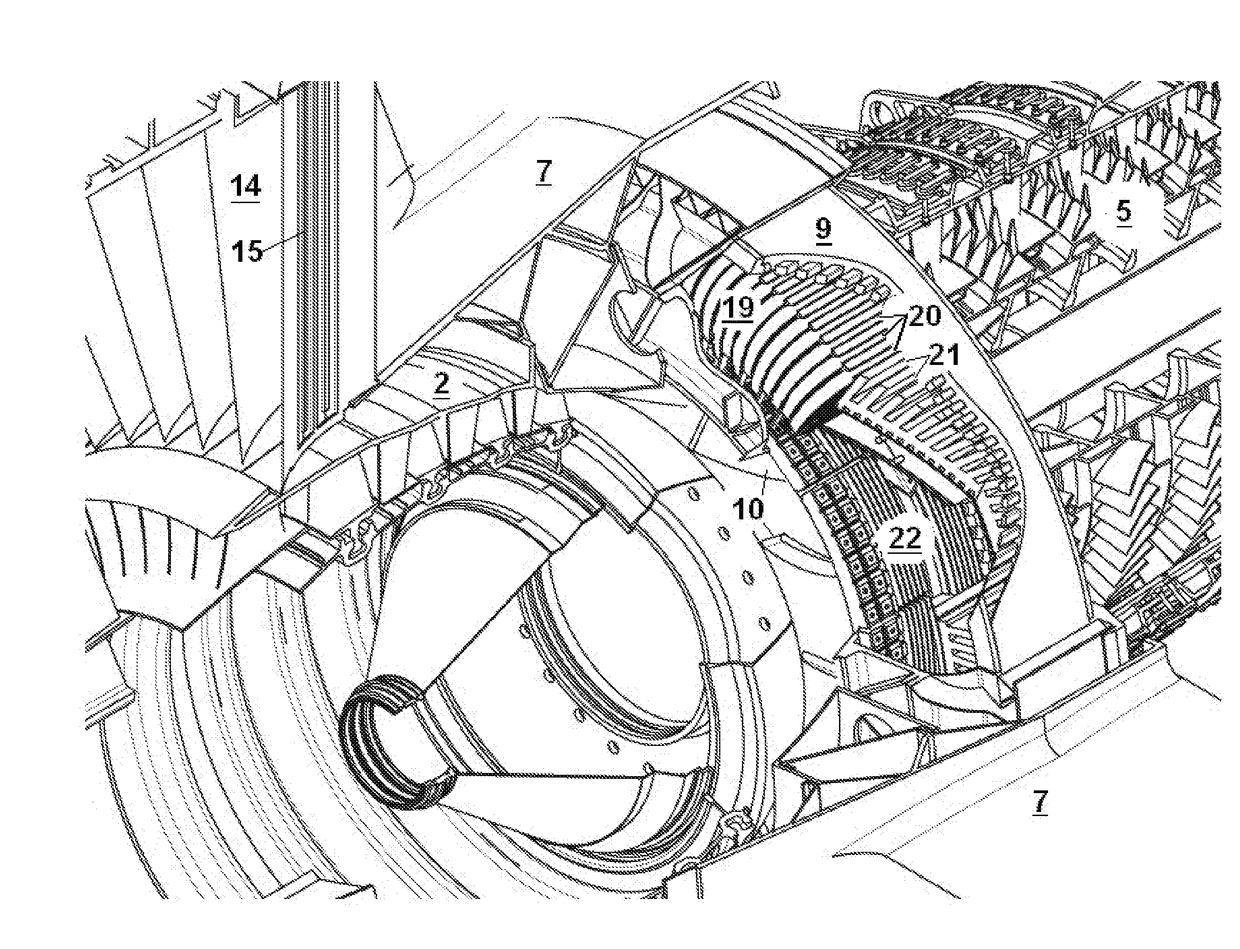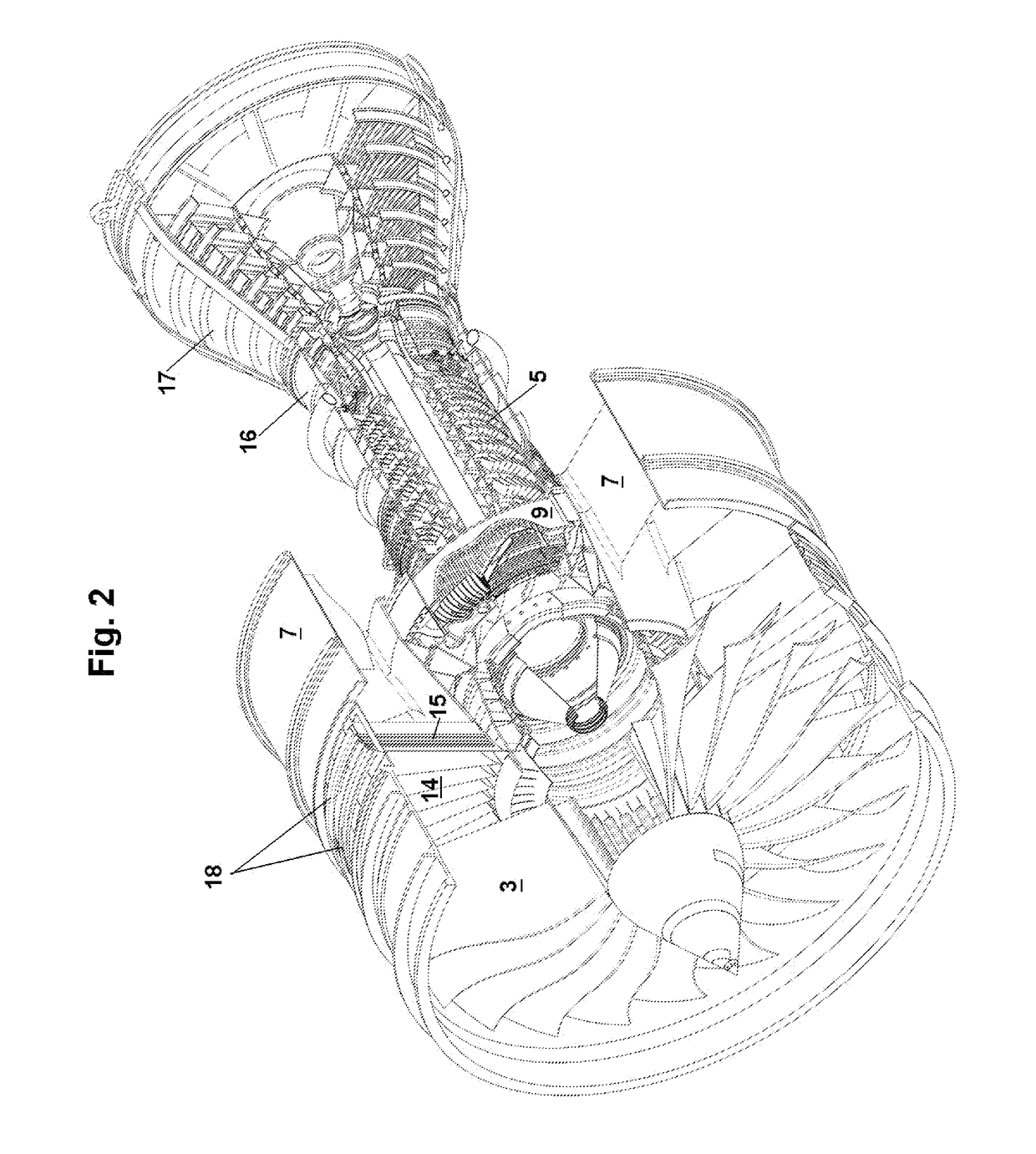Fully Integrated Hybrid Electric Jet Engine
a hybrid electric jet engine and fully integrated technology, applied in the direction of liquid fuel engines, machines/engines, efficient propulsion technologies, etc., can solve the problems of performance detriment, not intended for high-power applications, etc., to increase the air gap radius/air gap speed, reduce windage losses, and increase power density
- Summary
- Abstract
- Description
- Claims
- Application Information
AI Technical Summary
Benefits of technology
Problems solved by technology
Method used
Image
Examples
Embodiment Construction
[0022]Referring to the drawings, FIG. 1 represents a generic representation of a hybrid electric turbofan jet engine from which the combustion section and the turbines were removed. The configuration of the turbofan engine is a classic two shafts spinning freely, with the LP shaft 1 supporting the LP compressor 2 and the main fan 3. The HP shaft 4 is supporting the HP compressor 5 and is driven in a conventional manner by a LP turbine (not figured). The LP shaft 1 is driven by a LP turbine (not figured) via a torque shaft 6. In general the speeds between the shafts are significantly different, e.g. by a factor of 2.5 to 3. The turbofan engine assembly is mounted around a mid-box 7 which acts also as the main structural part. A ring type electric motor 8 is also mounted inside the mid-box 7. The rotor 9 of the motor 8 is resiliently coupled to the LP shaft 1 and to the torque shaft 6. The rotor 9 is designed with profiled (curved) spokes 10 in order allow an unrestricted airflow pass...
PUM
 Login to View More
Login to View More Abstract
Description
Claims
Application Information
 Login to View More
Login to View More - R&D
- Intellectual Property
- Life Sciences
- Materials
- Tech Scout
- Unparalleled Data Quality
- Higher Quality Content
- 60% Fewer Hallucinations
Browse by: Latest US Patents, China's latest patents, Technical Efficacy Thesaurus, Application Domain, Technology Topic, Popular Technical Reports.
© 2025 PatSnap. All rights reserved.Legal|Privacy policy|Modern Slavery Act Transparency Statement|Sitemap|About US| Contact US: help@patsnap.com



